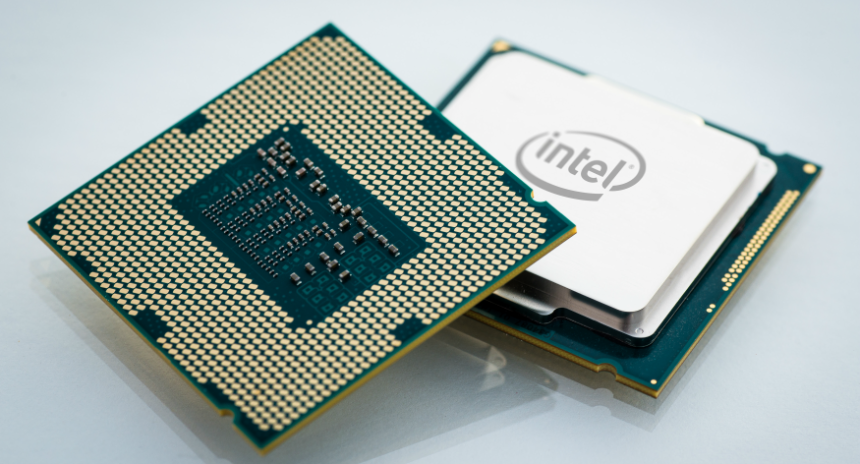If you’ve been venturing into electronics stores in search of a new desktop or notebook, you may have noticed that the vast majority of models on sale use Intel or AMD processors. The first is certainly more famous, but it is not uncommon to find the second on the market.
But, after all, what is the difference between Intel and AMD? Is it true that one is simply better than the other? But what about the price, which is the best value for money? Read the paragraphs below to understand, at a glance, everything you need to know about each brand’s processors.
Intel pros and cons

Intel is certainly the most popular processor brand in the world. More recent surveys indicate that the company is responsible for the revenue of more than 80% of the global CPU market, while AMD is a distant second. What is the reason for this success anyway?
In general, it’s easy to argue that Intel’s processors perform better in a few key ways. Although AMD chipsets have more processing cores, Intel chipset cores are faster and more efficient individually. This, however, is not an inflexible rule: there are AMD processors with better performance than Intel’s, but not many.
Proof of this is benchmark tests, such as CPUBoss. In a direct comparison , an Intel Core i7-6700K easily beats an equivalent from AMD, the FX-9590. In terms of specifications, this finding is not at all obvious. Intel’s chipset is a 4GHz quad-core, while AMD’s is a 4.7GHz octa-core. Even so, the performance of the former is superior.
This is mainly due to Intel’s years of investment in research and development in the architecture of its chips. Intel processors are also usually more “flexible” in terms of compatibility with different motherboard models, which makes it easier for PC manufacturers – and also for enthusiasts wanting to build their own machines.
The downside is that, invariably, most of Intel’s higher-performance processors are also more expensive than AMDs with similar specs. In a quick survey of Brazilian retailers, it is possible to find Intel chips costing from R$300 to almost R$10,000. Those from AMD can be purchased by anyone with between R$130 and R$2,000 to spend.
AMD pros and cons

As we have already commented, many of AMD’s processors are cheaper than Intel’s, which guarantees an advantage to the company in this regard. It is important to remember that “cheaper” does not mean, necessarily, and not in all cases, that the processor performs poorly. It might not be as good as a rival, but it certainly can’t be bad.
If you compare just the prices, you will see that an AMD Athlon X4, which can be found costing around R$300, has a better overall performance (according to CPUBoss tests ) than an Intel Pentium of the same price range. If you want to save on the processor, AMD models are usually more worthwhile in terms of cost-effectiveness.
Another point where AMD usually wins is the integrated graphics card in its products. According to CompuBench’s benchmark tests, for example, an AMD A10 7870K, which costs around R$700, has a much higher graphics performance than an i5-6400 which costs almost the same. That is, in more basic games, AMD processors are also more advantageous.
The bad side of AMD products – and also one of the main criticisms of users of the company – has to do with their energy efficiency. The brand’s processors consume, on average, more energy than competitors, in addition to getting hotter more often. Much of this is due to the higher number of cores, which makes heat dissipation more complicated.
A PC with a high-end AMD processor, therefore, ends up requiring a better cooling system – which can make the final package a little more expensive than if you had bought an Intel processor. Therefore, it is reasonable to conclude that AMD has good options for those who want to save money, but not without some disadvantages.
Conclusion
Is it possible to say that one is better than the other? The shortest answer would be: no. Intel and AMD have advantages and disadvantages, but at the end of the day, it all depends on what you, as a consumer, value most when buying a computer or a processor to build or upgrade your own PC.
Intel makes many processors that are faster and more efficient, at least in most price ranges; while AMD has processors with better-integrated GPUs and at a more advantageous cost-benefit ratio, at least among the cheapest models. It’s worth comparing similarly priced chipsets from the two brands before buying.
Other details that weren’t included in this article, such as the possibility of overclocking and compatibility with motherboards, can also help unbalance the dispute. In the end, a processor doesn’t do anything alone: a good PC also needs several other hardware components to exhibit good performance.
The important thing is that you avoid betting all your chips on the most famous brand because this is not always an indication of quality. Both Intel and AMD have products capable of meeting different consumer profiles. Just, first, decide which one is yours.
